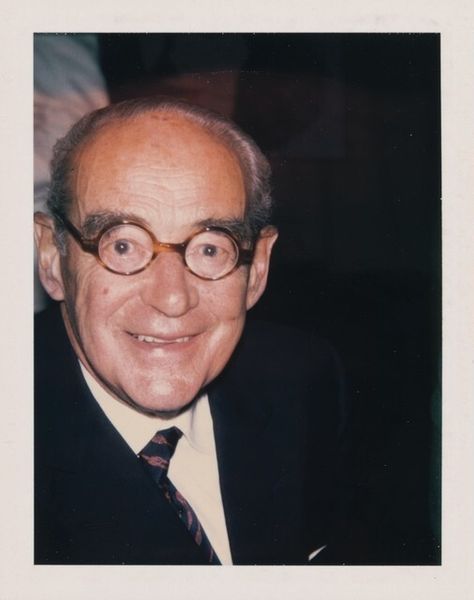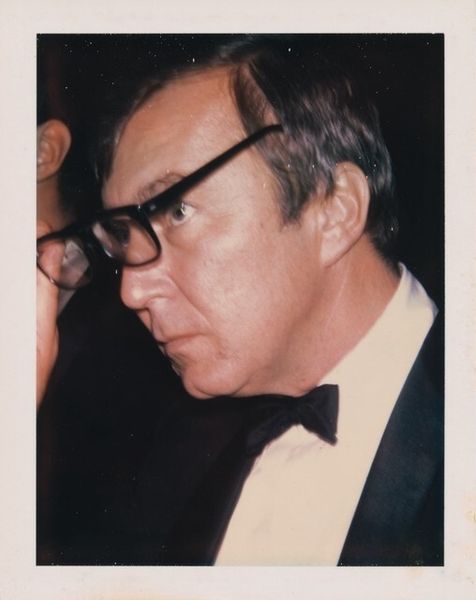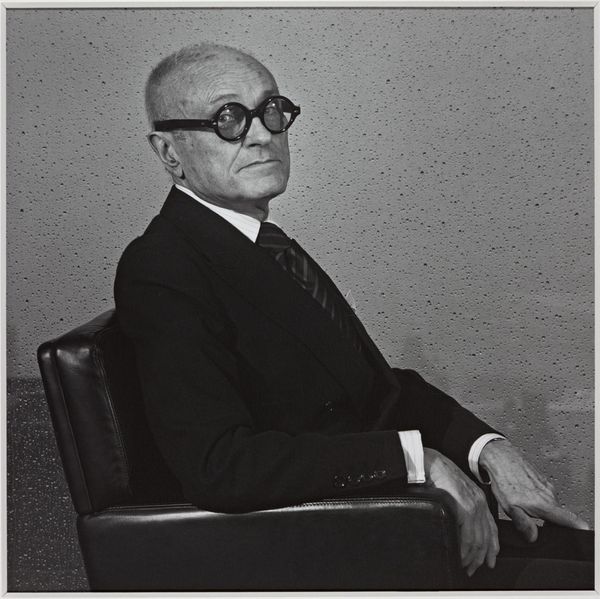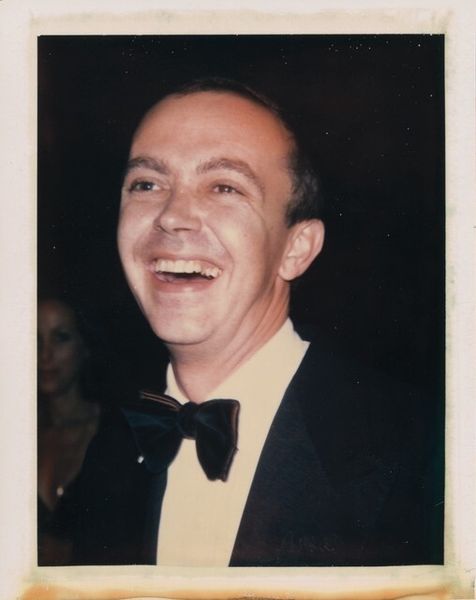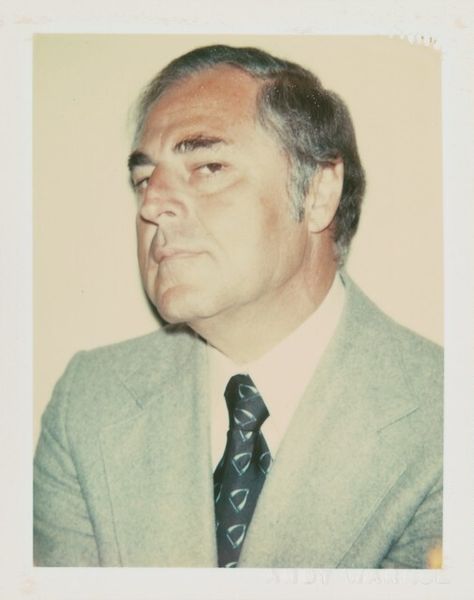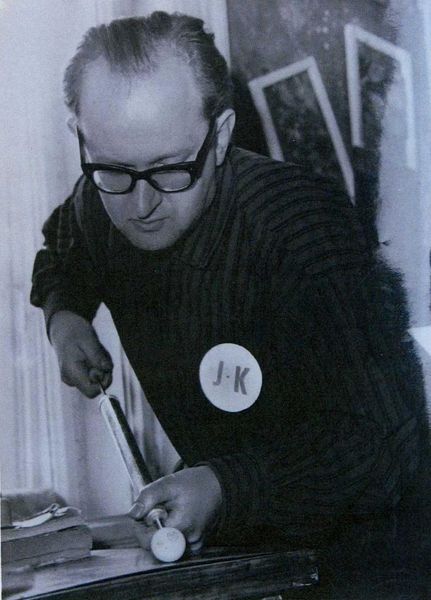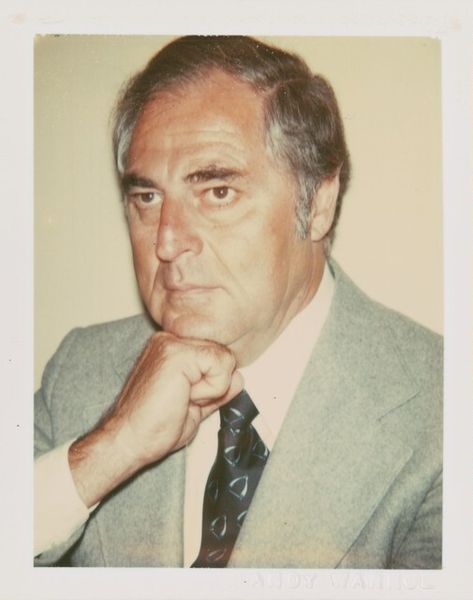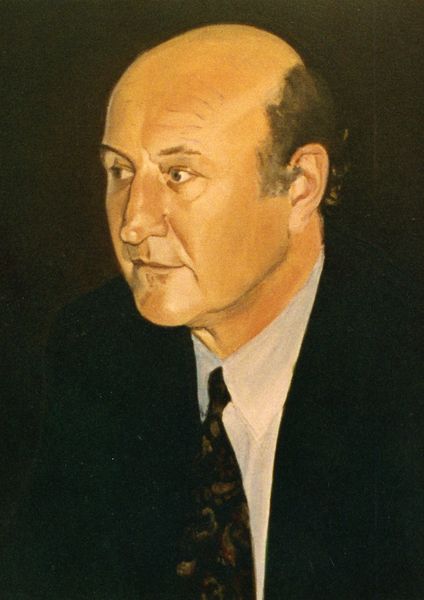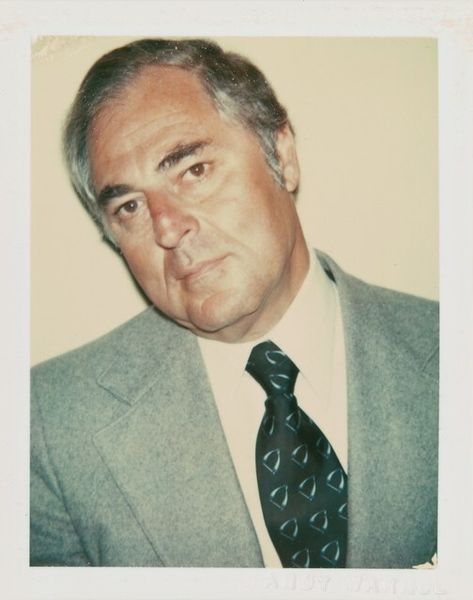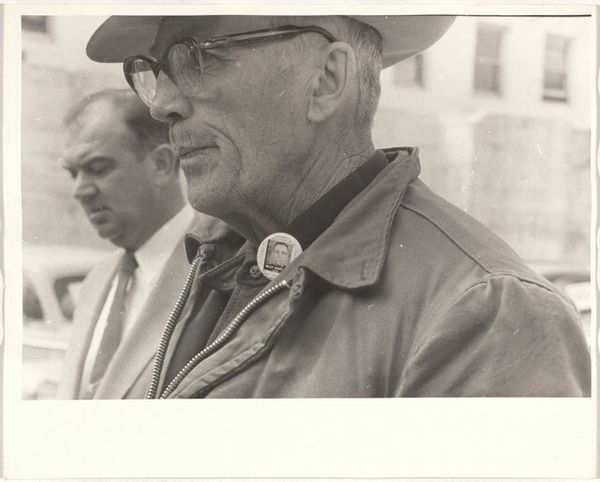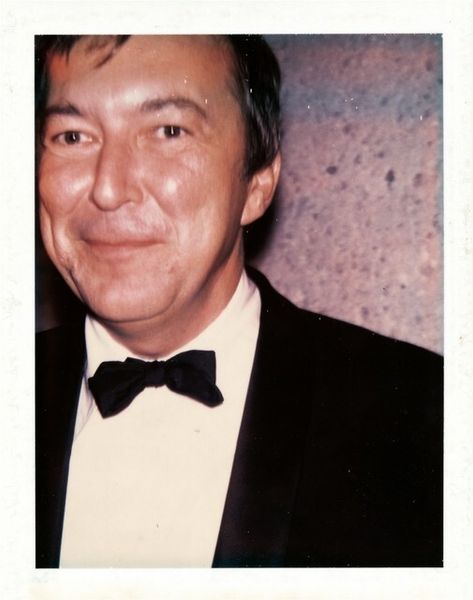
Dimensions: image: 9.5 × 7.2 cm (3 3/4 × 2 13/16 in.) sheet: 10.8 × 8.5 cm (4 1/4 × 3 3/8 in.)
Copyright: National Gallery of Art: CC0 1.0
Curator: Up next, we have Andy Warhol’s polaroid of Philip Johnson, created in 1972. What’s your first impression? Editor: It has an immediacy that’s surprising, almost voyeuristic. I'm struck by the casual quality—a powerful figure captured candidly in a private moment. It's intriguing, though the tight framing makes it slightly unsettling. Curator: Well, consider that Warhol frequently used Polaroids as preliminary studies for his larger silkscreen portraits. In this way, we see the raw, unedited Johnson, almost like a study in celebrity. What interests me is Warhol’s interest in documenting and, indeed, producing these personalities. Editor: Exactly. The photographic materials—the instant film—democratized portraiture. Here was Warhol, an artist known for elevating the mundane, turning a process readily available to anyone into high art. The very materiality of the Polaroid lends itself to mass production. Curator: The context is crucial. Johnson, himself an architectural icon, was known for shaping public taste and pushing boundaries. Seeing him through Warhol’s lens, in this disposable, repeatable format, adds layers of commentary about fame and cultural influence. Museums at the time played a key role in endorsing pop art. Editor: Absolutely. Warhol captured a moment and captured an era where the elite, like Johnson, embraced pop culture, even actively participating in it. You see that played out institutionally as these kinds of images gained acceptance. Curator: Warhol's deliberate use of the Polaroid also suggests commentary on authenticity. What is real when even the representation can be endlessly duplicated? Editor: Precisely. And this image serves not just as a representation but as a historical document. A time capsule of sorts. Curator: Thinking about Johnson's body of work, his stark, modern buildings—juxtaposing it with Warhol’s process and the photographic medium gives me much to consider. Editor: Agreed. It’s fascinating to look at both their processes, as well as their respective social impacts. Both undeniably significant, but through such different methods.
Comments
No comments
Be the first to comment and join the conversation on the ultimate creative platform.
